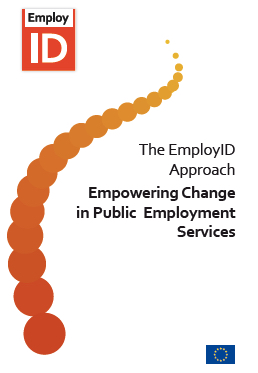My journey with Institut Technik & Bildung (ITB) – Part Three: From the Europrof project to the Hangzhou conference and follow-up (1996 – 2006)
With my previous posts I started to write a serious of blogs with the heading “My journey with Institut Technik & Bildung (ITB)”. These blogs are intended to support the work (or follow-up) of the ITB “Klausurtagung” that will take place on Friday 9. December 2016. The inspiration to write personal blogs that deal with the history of ITB comes from the Klausurtagung 2015. With this series I try to compensate my absence due to health issues and to pass a message, wah has happened at different times and with different themes. In the first post I tried to cover my first encounters – my study visit in 1989 and participation in the Hochschultage Berufliche Bildung 1990 conference. In the second post I gave insights into the Modellversuch Schwarze Pumpe and to related European cooperation projects 1995 – 1999. In this post I will discuss the Europrof and the further work with its core ideas towards the Unesco International TVET meeting in Hangzhou 2004 and its follow-up.
The Europrof project 1996-1998: Training of new VET professionals
In my first post of this series I referred to my talks on the regional pilot project of ITB on the theme “Qualifizierung der Berufspädagogen für alle Lerorten”. Whilst that one was a small-scale pilot, it expressed the idea to overcome the divisions between vocational education and training (VET) professionals – vocational subject teachers, in-company trainers and training managers – with an integrative concept. This idea was taken further by the ITB initiative to launch a European cooperation project that seeks to cross the accustomed boundaries and outline a new European framework.
In this spirit the Europrof project launched a new debate on the education of VET professionals. The main aim was to to overcome the cultural barriers between expertise in VET (teaching-learning processes) and in HRD (workplace-based learning and continuing professional development). At the same time the project tried to support debates on the renewal of vocational teacher education and on the strengthening of European research culture in the field of VET.
Regarding the contribution of the Europrof project to Europe-wide knowledge development it is worthwhile to note that the project brought together participants that had different views and orientations on the theme “education of new VET professionals”. In this respect the project managed to organise a Europe-wide “invisible college” in terms of a cross-cultural learning community. However, after the development of the “cornerstones” (and after the incorporation of the research themes of the affiliated experts) the project started to experience difficulties in working towards a common core structure for curriculum development that would take the debate further from the ‘cornerstones’ and from the attached research themes. Therefore, the Europrof project completed its work with a gallery of country studies and of supporting research themes.
The project history of Europrof was characterised by an attempt to avoid the transition of the partners into advocates of their national educational models (and of related VET cultures). Therefore, the Europrof project tried to reduce the amount of comparative analyses and to push the partners towards collaborative research & development work. However, after certain interim workshops the project was no longer able to promote a common change agenda, since the national partners could not show indications of changes in their national contexts. Instead, the project was concluded with reports on supporting research themes.
The Euroframe project 1999-2000: Partition of the follow-up agenda
The multiplier-effect project Euroframe tried to avoid pursuing an over-ambitious agenda by dividing its work into two parallel strands of work (taking into account different priorities in the participating countries). The two strands referred to different educational concepts and target groups (and corresponding models of European cooperation):
- The more ‘academic’ strand developed as proposal for a European inter-university institute with a mission to promote VET-related research and research-based expertise in educationa and training of VET professional.
- a set of case studies on research & development activities that could link the work of such an institute to pilot projects and regional initiatives with a broader social context.
However, the two strands became independent of each other and the underlying conceptual approaches started to grow apart from each other instead of working towards a cohesive framework.
As a consequence of the differentiation of the project dynamics, the case studies were not in the position to give a clear illustration how the common framework (and the related inter-university institute) could support the developmental activities (that were linking the issue ‘continuing professional development’ to broader social and regional contexts). Thus, the project histories revealed the need for bridging concepts and methodologies that could link such strands to each other on the basis of ‘coherent diversity’ and ‘mutual enrichment.
The new start with the UNESCO-UNEVOC centre – the Hamburg workshop (September 2004)
Whilst the follow-up at the European level fell for some time to latency, ITB had in the meantime created contacts with the newly established UNESCO-UNEVOC centre (now based in Bonn). This cooperation had already led to joint publication projects – a new book series on international reference publications on TVET development and TVET research (in the UNESCO terminology the overarching concept is ‘technical and vocational education and training’ – TVET). In this context the issue of developing an international agenda for supporting TVET teacher education and for promoting TVET research. Also, at that time ITB was also involved in a major European consortium that provided an interim assessment on European VET policies after the EU-summit in Lisbon 2000 – prepared to the meeting of Education miniters in Maastricht 2004 (Leney, T. et al. 2004: Achieving the Lisbon goal: The contribution of VET. Final report to the European Commission. Brussels.). In this report the contribution of ITB (Philipp Grollmann) was the analysis of European developments in vocational teacher education and training of VET professionals.
The main international initiative – promoted by Felix Rauner from ITB and director Rupert MacLean from UNESCO-UNEVOC centre – was taken further with Chinese counterparts and supported with a preparatory conference in China (Spring 2004). In Europe a similar preparatory event was organised in collaboration with the European research network VETNET as an international workshop of the GTW-Herbstkonferenz in Hamburg 2004. This workshop discussed firstly policy-analyses with reference to Lisbon summit and to the above mentioned Maastricht-study. Then it explored the situation of TVET teacher education and current initiatives in the participating countries (including Germany, Norway, Finland, Hungary and Greece). In this way the Hamburg workshop prepared the grounds for the forthcoming international event and for European follow-up activities.
The UNESCO International TVET meeting in Hangzhou (November 2004)
This UNESCO International TVET meeting in Hangzhou had the theme “Innovation and excellence in TVET teacher education”. It was organised jointly by the Chinese UNESCO-commission, the UNESCO-UNEVOC centre and the Asian UNESCO-offices. The participants represented all major global regions. In particular it is worthwhile to note that Asian and European countries were widely represented.
The main thrust of the conference was to analyse current needs for TVET-related expertise, to prepare a common curricular framework for Master-level programmes, to reflect upon the progression strategies related to short-cycle models and to outline a common approach for promoting professionalisation and quality awareness. In the light of these tasks, the shaping of the common curricular framework became the crucial task. In this respect the working document on the curricular framework was presented for general acceptance and put forward as the “Hangzhou framework”.
Concerning the initial starting points of the discussion it is worthwhile to note the following points:
- The document took professional areas of specialisation (”vocational disciplines”) as core structures for pedagogic and professional knowledge development in the field of TVET. Thus, the document distanced itself from approaches that would consider general educational sciences or subject-disciplines as the leading disciplines within the development of TVET.
- The document had used a very limited number of exemplary vocational fields of specialisation (’vocational disciplines’) to make the general picture transparent. In this respect the document did not contain a comprehensive catalogue of possible fields of specialisation.
- The document did not discuss in detail the role of transversal and connective pedagogic aspects as a support for the kind of learning and knowledge development that is based on professional areas of specialisation (‘vocational disciplines’). However, in this context it is worthwhile to note that such integrative know-how is of vital importance for bringing the field-specific vocational disciplines under a common framework.
The working group took the approach based on professional areas of specialisation (’vocational disciplines’) as its common starting point. Thus, the discussion tried to find the best composition of such professional areas to make the framework comprehensive and transparent. In this respect the group tried to identify professional areas (or clusters of areas) that can be considered as mutually supporting in the education of TVET professionals and as a basis for the scientific development of ’vocational disciplines’. In this context it became apparent that it is not possible to include several professional areas into an international framework because some areas appear in different clusters in different global regions.
Concluding remarks
The event in Hangzhou was the peak point but at the same time the turning point. It was easy to agree on a common declaration but far more difficult to organise a follow-up and to proceed to implementation. There were two ‘regional’ follow-up conferences in Asia (Tiensin 2005 and Colombo 2006) and one in Europe (Oslo/Lilleström 2006) but no major steps could be taken forward as joint actions. At best a follow-up agenda could be outlined in the ITB-led Asia-Link project TT-TVET project 2006 – 2009, but also in the project the agendas for promoting TVET teacher education moved from common core principles to pragmatic steps forward in each participating country.
In this context it is worthwhile to note that my role changed considerably at different phases of this process history. During the work of Europrof and Euroframe projects I was employed as a project manager of Cedefop (European Centre for Development of Vocational Training) and accompanied the work of these projects. During the Hamburg workshop and the international Hangzhou meeting I was employed by Jyväskylä Polytechnic, but I was already acknowldged as Visiting Fellow (Gastwissenschaftler) of ITB. In the follow-up phase (from Summer 2005 on) I had started working as a project-based researcher in ITB.
– – –
I think this is enough of the development of this theme from the Europrof project to the Hangzhou framework. Whilst the follow-up in the European context died out rather soon, it provided a basis for other activities regarding professional development of VET teachers and trainers in Europe.
More blogs to come …
 According to the
According to the 
